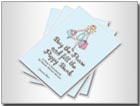Glossary
- Amortization
- With a mortgage, the borrower agrees to pay back the amount borrowed over a period of time. This breaking of the loan into smaller parts to be paid back over uniform blocks of time is amortization.
- Amortization Period
- The actual number of years it will take to repay a mortgage in full. This period can be longer than the loan term.
- Asset
- A tangible asset is something of value that you own such as your car.
- Bank
- A financial institution that accepts deposits and channels the money into lending activities.
- Bank Card
- A plastic card encoded with customer account information that is accepted by banks, merchants and allows owner access to customer accounts.
- Budget
- A sum of money allocated for a specific purpose.
- Capital Gain
- An amount by which the selling price exceeds the purchase price.
- Capital Loss
- An amount by which the purchase price exceeds the selling price.
- CDIC
- Canadian Deposit Insurance Corporation – A federal corporation created to protect the money deposited into CDIC member financial institutions.
- Cheque Kiting
- Cheque fraud that is committed by writing a cheque for an amount of funds unavailable in the account.
- Contingency
- Funds reserved as a buffer to cover any cost overruns or unexpected expenses.
- Continuous Savings Plan
- Regular, automatic monthly deposits into a savings account or savings plan.
- CPP
- Canada Pension Plan – A contributory, earnings-related social insurance program.
- CPP
- Continuous Purchase (Savings) Plan – Regular, automatic monthly deposits into a savings account or savings plan.
- CSB
- Canada Savings Bonds – A bond issued by the Canadian Government as a safe method for Canadians to acquire savings.
- Credit
- An arrangement for deferred payment for goods and services.
- Credit Card
- A plastic card encoded with customer account information that is accepted by merchants and used to credit accounts for processing sales transactions. Credit cards are the most common.
- Credit History/Rating
- An estimate based on previous dealings, of a person’s or an organization’s ability to fulfill their financial commitments.
- Credit Limit
- The authorized credit amount that a lender will allow you to borrow.
- Financial Institution
- A generic term for banks, trust companies, credit unions, and perhaps other investment companies that deal with money, hold money, invest money, and lend money. An institution (public or private) that collects funds (from the public or other institutions) and invests them in financial assets. Its primary function is to intermediate between lenders and borrowers in the economy.
- Financing
- Obtaining money resources.
- Fixed Expenses
- Costs that do not vary from one period to the next.
- Fraud
- An intentional deception made for personal gain.
- GIC
- Guaranteed Investment Certificate – An investment that offers a guaranteed rate of return over a fixed time period.
- Gross Income
- The amount of income received (prior to deductions such as income tax, benefits, pension).
- Income Tax
- A tax levied on the financial income of people.
- Interest
- The amount a borrower pays a lender for borrowing money – the cost of borrowing. Generally is it represented as an annual percentage rate.
- Liability
- An amount you owe to someone, a bank or financial institution.
- Line of Credit
- Any credit facility extended to a person. A bank or other lender agrees to provide a client with loans of money up to an approved amount.
- Loan
- Advance of funds to a person by a lender. It is a type of debt and is required to be repaid with the additional payment of interest usually within a specified period of time.
- Market Value
- The price at which buyers and sellers trade the item in an open marketplace. The approximate value of an asset if you were to sell it.
- Mortgage
- Property is provided as security for the repayment of a loan. A legal instrument which conveys a security interest in real estate property. A lien on real estate given by the buyer to secure repayment of money borrowed to purchase the real estate.
- Net Income
- Income amount received after gross income has been reduced by deductions (such as income tax, benefits and pension).
- Net Worth
- Assets less liabilities.
- NSF
- Non- Sufficient Funds – The demand for payment (a cheque) can not be honored because of insufficient funds (not enough money in the bank account) or irregularity of funds.
- Pension
- A regular stream of income paid to an individual (who is no longer earning income) by the government or superannuation fund.
- RESP
- Registered Educational Savings Plan – A program regulated by the federal government of Canada, offering subsidies and potential tax advantages to families saving for their children’s education.
- Revolving Credit
- Credit that can be used up to an authorized limit and paid down at any time. It does have defined payment criteria however it does not have a fixed term and once borrowed amounts are repaid, they can be re-borrowed. Credit cards and line of credit are good examples of revolving credit.
- RSP
- Retirement Savings Plan – A plan for setting aside money to be used at retirement. A RRSP is an account that provides tax benefits for saving for retirement in Canada. It is a plans that’s registered’ with Revenue Canada. It allows you to set aside money for you retirement on a tax sheltered basis. In essence, an RRSP is your own independent pension plan. You can choose to invest in several different options including savings accounts, term investments and mutual funds.
- Term
- The length of time a lender will lend funds to a borrower. According to the loan agreement, the length of time between the date of disbursement of the loan and the date it is expected to be fully repaid.
- Variable Expenses
- Expenses that vary from one period to the next.

DPB's blog
Find great money management tips.

Book Store
Books and mini-books.

1-On-1 Appointment
Schedule your 1-on-1 appointment to benefit from personal coaching.
